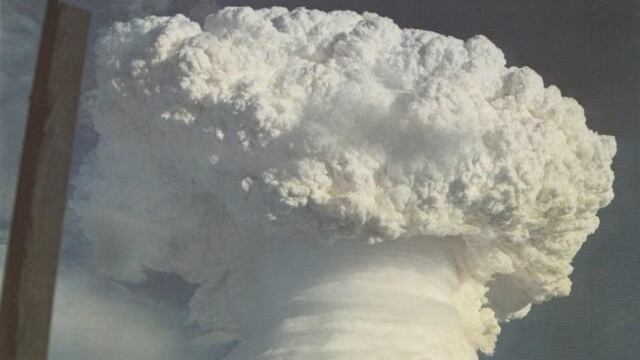The nuclear brinksmanship of Russian President Vladimir Putin—and the refusal by President Joe Biden to rule out a first strike—have made doomsday feel a little nearer than usual.
And in our backyard, someone who’s witnessed a nuclear weapon detonation has issued a warning.
Rod Buntzen lives in Southeast Portland. He’s the retired chief scientist of an advanced technology company. Before that, he served as a weapons scientist in the U.S. Navy.
That’s where Buntzen watched a hydrogen bomb detonated on a barge moored offshore of Bokoluo Island in the South Pacific in 1958. In this morning’s edition of The New York Times, he sketches his memories of the nuclear tests known as Operation Hardtack I.
“Sixty-three years later, what I saw remains etched in my mind,” Buntzen writes, “which is why I’m so alarmed that the use of nuclear weapons can be discussed so cavalierly in 2022.”
Buntzen, who also authored a memoir on the nuclear tests, describes in granular detail what a nuclear explosion looks, sounds and feels like from 20 miles away.
“The heat was becoming unbearable,” he writes. “Bare spots at my ankles were starting to hurt. The aluminum foil hood I had fashioned for protection was beginning to fail.
“I thought that the hair on the back of my head might catch on fire.”
It’s an unsettling read. Find the full essay here.

